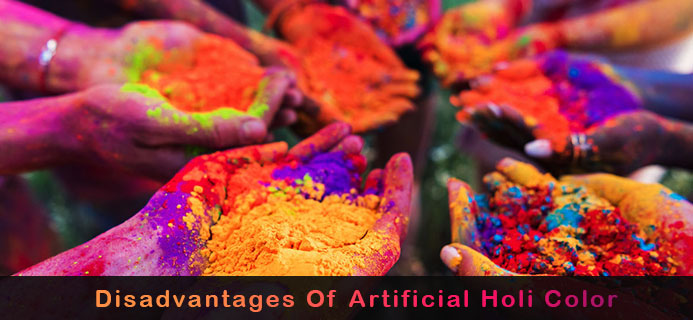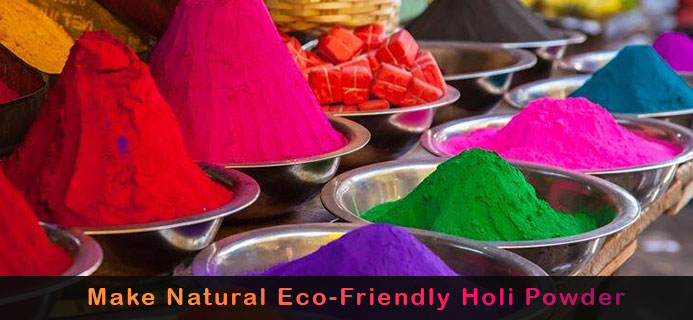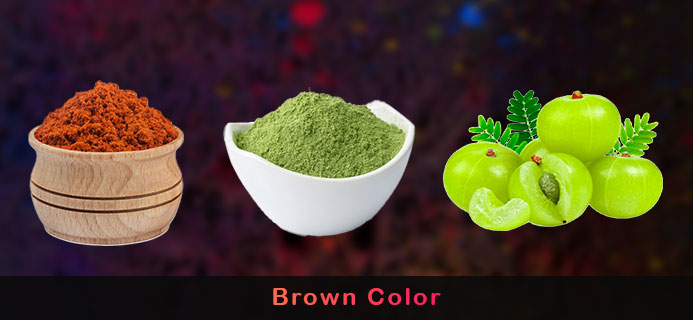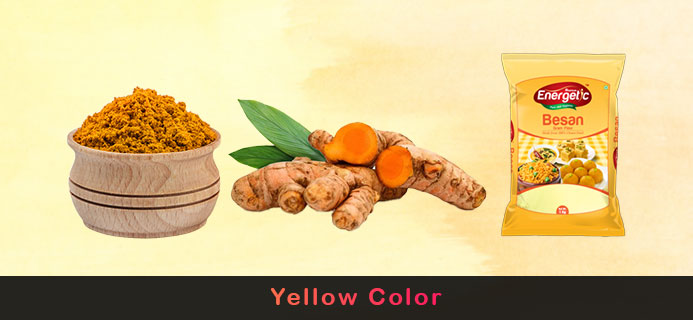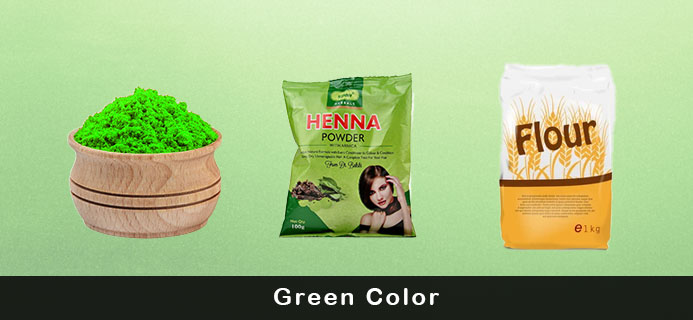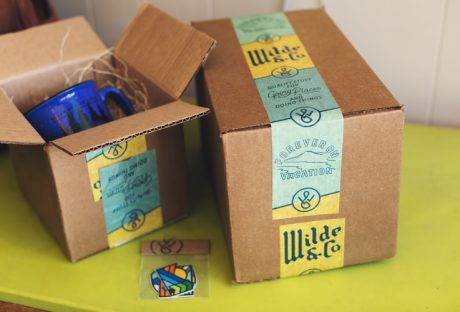The festival of Holi signifies the end of winter and the arrival of beautiful spring. The natural colors of Holi fill everyone’s life with joy and happiness. However, this does not mean that you will start flooding the market and your home with inexpensive synthetic colors.
The best way to spend Holi this year is by making your own Holi powder that not only prevents many health hazards but also will keep your environment neat and clean. Color is regarded as the synonym of Holi and these colors are very easy to make at home.
According to the dermatologist, some synthetic Holi colors contain ingredients that can be harmful to your skin. This can cause several allergies because they are made up of chemical-based colors and are toxic to the environment. This is one of the disadvantages of artificial Holi color nowadays. This is the reason why you should choose natural eco-friendly Holi.
Disadvantages Of Artificial Holi Color
According to beauty experts, artificial Holi colors can affect your eyes, lungs, and skin. If your skin is very sensitive and suffering from certain skin allergies then you must never use artificial Holi color.
The common issues of artificial Holi color are as follow:
- The chemicals can cause serious injury to your skin.
- Chemical colors when applied to the hair can cause loss of hair (alopecia).
- Irritation of eyes
- Overall fatigue and weakness
- Dehydration
- Skin rashes
- Dry scalp and hair damage.
How To Make Natural Eco-Friendly Holi Powder At Your Home – Step By Step Guide
The excitement of Holi is more among children and teenagers. So, it can be useful for you if you make natural colors at your home beforehand. You must always opt for natural eco-friendly colors to protect your skin and prevent your surroundings from becoming toxic.
Now, let’s start to make our natural eco-friendly Holi powder to celebrate this Holi.
1. Brown Color
Holi is the time for family bonding, and this can be the best time to spend your precious moments with them. If you are willing to make some dark colors with natural ingredients, then Brown can be your suitable choice.
Brown is a natural color that evokes a sense of strength and loyalty. Moreover, it affects your mind and body by creating feelings of peace, confidence, and wholesomeness.
To make the brown color, you need the basic ingredients:
- 1 part of henna powder
- Four parts of amla powder
Instructions:
Mix 1 part of henna powder with four parts of amla powder thoroughly. You can also dissolve them in water if you want wet Holi powder. Soon you will get a brown color powder with which you can play Holi with your friends and family.
2. Purple Color
There is a long history of Holi that very few people know. Nevertheless, people all over the world celebrate Holi with great enthusiasm and happiness.
The purple color of Holi symbolizes pride, creativity, independence, and royalty. Actually, it is the color of mystery. Now, let’s start making the purple color Holi recipe to celebrate this colorful festival.
For the purple color, you need:
- 1 to 2 kg of Beetroot
Instructions:
Cut 1 to 2 kg of Beetroot and boil it in a cooker. After a few minutes of five to six whistles, remove the water from the pressure cooker as soon as it cools down. To dilute the same, you must use fresh water, or you can also preserve it in the fridge.
3. Blue Color
The blue color symbolizes stability, wisdom, and inspiration. Simultaneously, it represents both seas and sky, and this signifies freedom, imagination, determination, and bravery.
It is believed that Lord Krishna is blue-colored as they fought against evil. Color is also a highly used color during the Holi festival.
To know the blue color Holi powder recipe, you need:
- Dried flowers of Neeli Gulmohar
Instructions:
The Gulmohar plant yields beautiful reddish-orange or blue color flowers. These are very attractive and long-lasting violet-colored flowers. You can take these flowers and dry them in the sun. When the flowers are completely dried, you can convert them into powdery form.
4. Yellow Color
Yellow is the color of sunshine, hope, and happiness. Moreover, this color stands for positivity, freshness, happiness, enlightenment, royalty, joy, etc.
This yellow color is also one of the most popular Holi color powders, and you can make this natural eco-friendly Holi powder at your own home.
To make yellow color powder for Holi, you need:
- Good quality turmeric powder
- Besan flour
Instructions:
The recipe of this Holi powder is the easiest of all. To make this, you need four parts of besan flour and two parts of turmeric powder. Your dry yellow color powder is ready!
5. Green Color
The green color signifies nature and the natural world. Our environment is also green, and you should maintain this by using eco-friendly green Holi powder.
The green color also represents forgiveness, unconditional love, compassion, etc. It gives healing energy to the heart.
To make this color, you need:
- Heena powder
- Flour
Instructions:
Take a pure henna powder, which is free from artificial ingredients. Then, you can mix it with flour to get a green color powder with which you can play Holi.
Closing Thoughts
Holi is one of the most popular festivals for Hindus, and later it becomes popular among non-Hindu communities as well. It signifies the victory of good over evil and is celebrated as a day of spreading love and happiness. To make this festival more memorable, you can make homemade natural Holi powder and save yourself as well as your environment from pollution.














